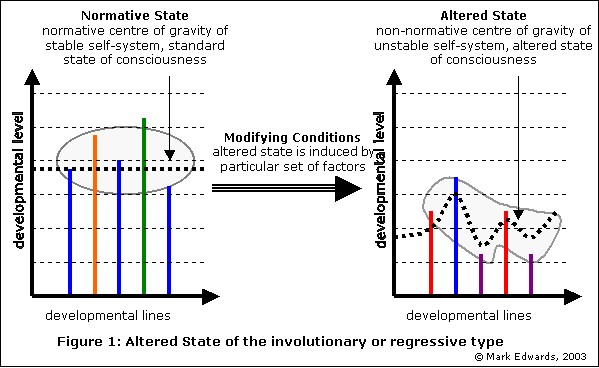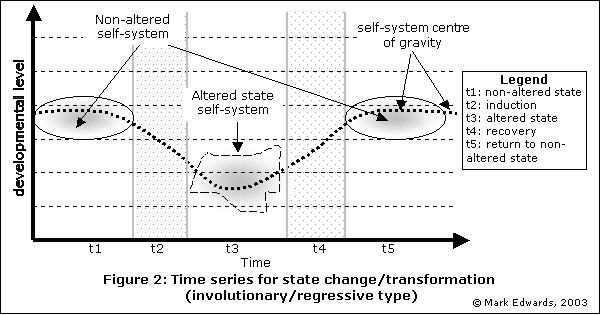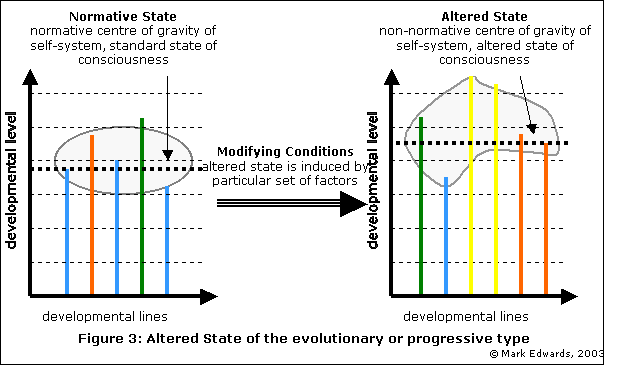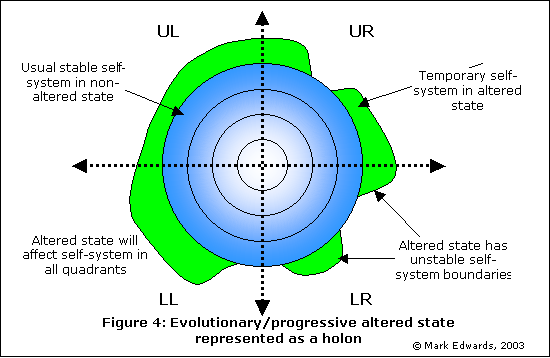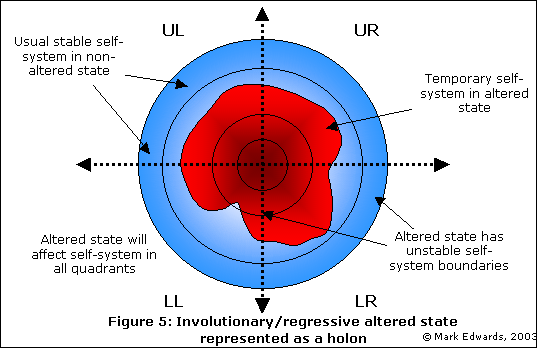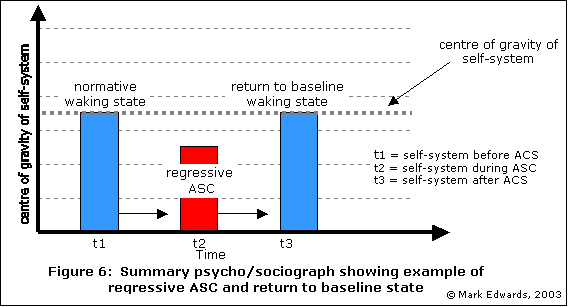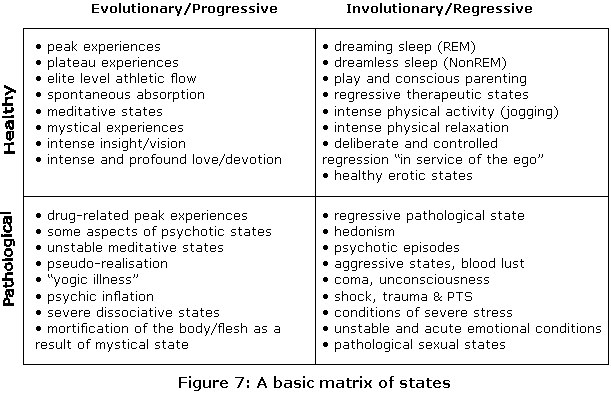|
TRANSLATE THIS ARTICLE
Integral World: Exploring Theories of Everything
An independent forum for a critical discussion of the integral philosophy of Ken Wilber
 Mark Edwards has an M.Psych in Developmental Psychology and a PhD in organisation theory from the University of Western Australia. He now works at Jönköping University in Sweden where he teaches and researches in the area of sustainability and ethics. Before becoming an academic he worked with people with disabilities for twenty years. He is the author of Organizational Transformation for Sustainability: An Integral Metatheory (Routledge, 2009)
. Mark Edwards has an M.Psych in Developmental Psychology and a PhD in organisation theory from the University of Western Australia. He now works at Jönköping University in Sweden where he teaches and researches in the area of sustainability and ethics. Before becoming an academic he worked with people with disabilities for twenty years. He is the author of Organizational Transformation for Sustainability: An Integral Metatheory (Routledge, 2009)
.
An Alternative View
|
| State of Consciousness | Level/Stage of Consciousness | Realm | Body-Energy |
|---|---|---|---|
| Deep Sleep (Formless) | 5. Spirit-bliss - causal consciousness | Causal Realm | Causal Body |
| Dreaming |
4. buddhi; higher mind – subtle consciousness 3. manas; rational-egoic consciousness 2. emotional-sexual, egocentric consciousness |
Subtle Realm | Subtle Body |
| Waking | 1. sensorimotor – somatic consciousness | Gross Realm | Gross Body |
This table also indicates that stages and states as highly related to each other, both in terms of developmental process (a state is the temporary accessing of a stage) and in terms of experiential content (via the body-realm nexus). Wilber says of the transpersonal stages (1999c, p. 17), "higher development involves not just altered states but permanent traits--that is, the necessity of converting temporary peak experiences into permanent transpersonal structures." This an important point. States and stages are not independent of each other and are very closely related. States, in fact, turn into stages when they become relatively permanent.
The waking state for Wilber is the gross realm. Here everyone has, "an awareness of the gross realm with its physical level of reality". The deep sleep state exists within the "the causal or formless realm" where there is nothing, "except vast emptiness or formlessness, a blissful release from all forms, high or low or in between. And thus in the causal realm there is only the ananda 'level' of blissful formlessness." In between these two, the waking and the dreamless sleep states, is the dream state whose realm contains virtually everything else, "images" , "emotions", "thoughts", "luminous visions", in other words, "the levels of emotion, mind, and higher mind".
In linking the dream state with the higher mind realm (amongst other things) and the dreamless sleep state with the formless realm Wilber is clearly saying that the dreaming and deep sleep states give access to the evolutionary higher transpersonal realms as the following indicates (2003b, n.14).
In my system, these pregiven realms for humans are represented primarily by the four (or five) great states of consciousness: waking (gross realm), dreaming (subtle realm), sleeping (causal realm), transcendent Witness (turiya or the fourth state), and ever-present Nondual suchness (turiyatita or the fifth and ultimate state). These pregiven realities represent, as it were, 2000 meters down, 4000 meters down, 6000 meters down, 8000 meters down, and 10,000 meters down or fully enlightened.
In this quote Wilber once again identifies the dreaming state with the subtle realm and the (deep) sleeping state with the causal realm of the transpersonal stages of identity. The depth indicators clearly show that the dreaming states for Wilber is closer to the stage of full enlightenment than the waking state and the deep sleep state is even closer still to the condition of final liberation. In his recent interview with Tami Simons he even says that, "the deep sleep state is the home of the capital "S" Self". In Excerpt G of the forthcoming Kosmos Vol 2 he says that "the deep sleep state, which contains an overmental consciousness, is supported by a causal body/energy". The deep sleep state for Wilber is a state where the subject experiences the most advanced level of transpersonal experience.
When you enter the deep dreamless state, however, even those levels of consciousness and energy fall away, and there is only a vast, almost infinite overmental consciousness—a blissful-radiant and nearly formless consciousness (anandamayakosha) (Wilber, 2003c, ¶ 178)
Wilber claims that people actually experience these very advanced transpersonal states when sleeping and dreaming. The Dharmakaya realm of Zen is one of the most profound realms of spiritual experience and of this realm Wilber says, "the Dharmakaya is experienced in deep dreamless sleep (formless consciousness)". In saying that the dream and deep sleep states give access to the very highest stages of development, i.e. causal and subtle consciousness, Wilber also points out that (Wilber, 1999c, p.446),
every human being, at no matter what stage or structure or level of development, has available the general spectrum of consciousness - ego to soul to spirit--at least as temporary states, for the simple reason that all humans wake, dream, and sleep.
Wilber's position is logically very clear and can be laid out in the classic syllogistic logic format:
- Premise 1: The dream and deep sleep states are transpersonal states.
- Premise 2: Everyone, including each infant, dreams and sleeps everyday.
- Conclusion: Therefore, everyone has access to the great transpersonal states everyday of their lives.
The conclusion is, however, based on the very contestable (and I believe false) premise that the dream and deep sleep states are transpersonal states. In many ways Wilber's whole theory hangs on this one contention. However, particularly when equipped with the analytical tool of the pre/trans fallacy, I find no evidence whatsoever, that the dreaming and deep sleep states have any special capacity to provide "access" to the transpersonal orders of identity. I will go into this into further detail in the next section. For the moment, though, I want to further pursue aspects of Wilber's position. Using our psychograph model we can represent Wilber's view as something like the following (see Figure 8):
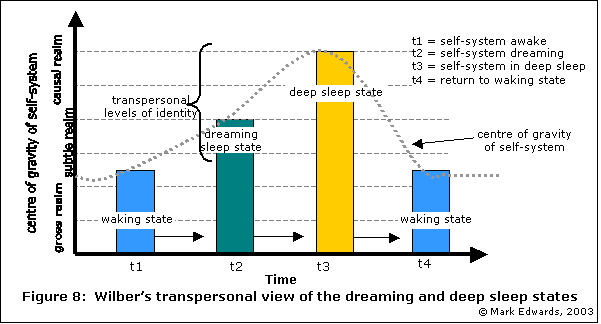
In contrast, I am proposing that the sleep and dreaming states are involutionary states and that all the firm evidence we have on what people experience in those states supports this. A non-PTF-2 view of the dreaming and deep sleep states that acknowledges the dreaming and deep sleep states as experiences of formative aspects of development. The involutionary nature of the nightly sleeping cycles fulfils a variety of sleep as recuperative functions for the self-system. These include restorative, integrative and healing functions for the body, emotions, sexuality, membership/interpersonal and rational/mental self. All the phenomenal contents and all the objective scientific data on the average person's experience of sleep has to do with these functions. They have little or nothing to do in the average person, child or baby with transpersonal experiences of any variety. Involutionary states are fully integrated into our identity that is why the sleep states are so natural and why we enter them on a very regular basis so easily. They are part of our evolutionary past in that they reconnect us with formative foundational aspects of our self-identity. These involutionary states also fulfil the functional purposes of biochemical maintenance and physiological recuperation which are vital for sustaining healthy and stable egoic well-being.
This involutionary view of the dream and deep sleep is completely consistent with the Integral theory understanding of how stages develop and how involution integrates formative stages of identity. The transcend-and-include principle means that former stages are present in some integrated way in present stages and that they can be accessed as part of the integrated identity that they constitute. When we sleep we move through our former stages of development - integrating and healing and renovating as we go. The sleep cycle is the great cycle of involutional restoration that heals the foundations of our minds and souls and is not as Wilber asserts an "evolution into your higher self". On the contrary, the great states of dreaming and deep sleep are an involution into your foundational self that consists of the biochemical, anatomical, motor-sensory, libidinal, and affective realms of identity. My view can be represented as something like the following (see Figure 9):
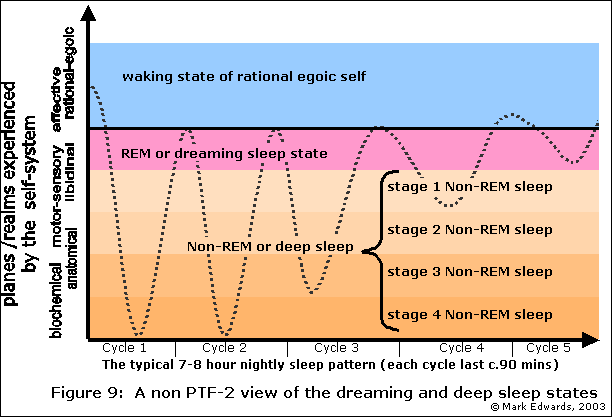
Figure 9 shows how the sleep cycle can be seen as a re-engagement with our depths and with the more archaic and primordial aspects of the self-system. it also conforms completely with the scientific representation of the standard sleep cycle and the stages of sleep model used throughout all sleep research centres. All this is at odds with Wilber's evolutionary/transpersonal model of the sleep states. In effect, every night when we go to sleep we become involved we don't become evolved.
The real difficulty with Wilber's PTF-2 equating of the dreaming and deep sleep states with transpersonal states is that he then must take the logical step of saying that everyone has these evolutionary states available to them every night. This is exactly the conclusion he reaches as evidenced in the following passage.
Thus, transpersonal peak experiences and altered states are available to virtually anybody at virtually any stage of development; the notion that transpersonal states are available only at higher levels of development is quite incorrect. (2000, p. xvii)
According to Ken, all one need do is to go to sleep at night and drift off and, hey presto, we enter the great realms that only the most awakened souls of the millennia have ever experienced in the waking state. It seems hard to believe doesn't it? But this is what Ken's systems of states and realms would have us believe. Here he describes the process in detail (2003c, ¶ 177).
When you dream, however, you are not aware of ... any other gross objects ... the 3 middle levels of consciousness [emotional/sexual, mind, higher mind] can all appear in the dream state, and that means that the 3 middle levels of consciousness can all be supported by same subtle body ... When you enter the deep dreamless state, however, even those levels of consciousness and energy fall away, and there is only a vast, almost infinite overmental consciousness—a blissful-radiant and nearly formless consciousness.
Wilber often refers to the deep sleep state as the causal state, and a "formless Oneness", "vast, formless" and "timeless, spaceless, formless" state that is the home of the Self the Witness that is the ultimate stage of development through the levels of identity. I can't help but be struck by the similar descriptions of the psychological perspective of the infant that are given by PTF-2 theorists such as Louise Kaplan (1978). Kaplan describes the state of the neonate as one of "omnipotent, merging oneness" and that, "merging, moulding, serenity, harmony, wholeness, bliss and perfection are the dominant motifs of the infant's [identity]" (1978, pp. 89-90).
Wilber, of course, does not so blatantly see the self-system of the child as existing permanently in the causal state, as he says, "The foetal and infantile self do not live in perfect Nirvana". Nonetheless, in his system all neonates "have access" to the transpersonal realms of the psychic/subtle and the causal every time they enter the dreaming or deep sleep state. For a neonate this means that they are accessing these highest states of consciousness for the majority of their day, everyday, for months and years on end. This also means that adults, who also are in the dream and deep sleep state for about 30% of their day, are "accessing" the transpersonal realms for a major proportion of their adult lives. I find all this to be highly unlikely to say the least. It runs counter to the whole basis of the pre-trans fallacy that Wilber has so clearly enunciated. It also belies all the data on the spiritual stages of development that Wilber often presents. Wilber (2003d, ¶ 7) states many times, for example, that in the USA,
less than 2% of the adult population is at any stage, wave, or state of consciousness that could be called "integral" ... where "integral" means something like Gebser's integral-aperspectival, Loevinger's autonomous and integrated stages, Spiral Dynamics' yellow and turquoise memes, Wade's authentic, Arlin's postformal, the centauric self and mature vision-logic.
But the integral stage is still a stage of personal-egoic being and is not even a transpersonal level and yet still there are less than 2% of individuals who have reached that stage of development. If we look at the lower transpersonal or third tier levels then there are even fewer individuals. Wilber estimates that of the "third tier--probably less than 1/100th of 1%" permanently identify with any formal transpersonal level of identity. So, under Wilber's system, human beings spend from between 30% (adults) and 75% (babies) of their entire lives immersed in either the "psychic/subtle" state of dreaming sleeping or the "causal/formless" state of dreamless sleep and yet only .01% of them ever establish this state in their waking identity. I am quite prepared to consider the view that says that transpersonal states are accessed in some way by a few individuals every now and then. But the incongruence between the experience of transpersonal states during sleep and during waking hours in Wilber's system is completely untenable according to any model that includes the pre-trans pattern of developmental stages.
I understand that states are not stages but there is nevertheless a very strong relationship between the two as Wilber himself point out. He says that (2003e, ¶ 250), "Higher potentials become concrete actualities--and higher states become actual stages" and that,
if a person continues to evolve, they will enter these transpersonal states in a permanent and enduring fashion (what I call "third tier"), and thus no longer experience them merely as altered or passing states." (2003f, ¶ 336)
In saying that "states become actual stages" Wilber is drawing attention to the concept that states share, to a significant degree, many of the same ontological and epistemological qualities. It's just that they are shorter in duration. Hence, however one considers them states and stages are highly related. Even more to the point, people who regularly engage with transpersonal ASC are far more likely to develop into the "concrete" stages that are associated with those states on a permanent basis. The ongoing and frequent accessing of a stage results in the "permanent and enduring" identification of the self-system with the deep structure qualities that determine the content of that state. But under Ken's system we are expected to believe that everyone every night spends hours and hours of their time immersed in transpersonal realms but only one in 10,000 of them bring any enduring form of that experience into their waking daily lives. I don't think so.
The simple alternative (and integral) explanation is that we are not "accessing" the transpersonal psychic, subtle or causal states at night in any consistent or structured way. We are not evolving into the great psychic, subtle and causal stages of identity. What we are doing when we sleep is accessing involutionary pre-personal states that are concerned with our chemical and biochemical maintenance, our pre-egoic unconscious identity, our precognitive ruminations and anxieties and the drives and desires of our somatic, affective, sexual and early membership self. None of this has much to do with the transpersonal. It has much more, in fact, as the contents of our dreams show us, to do with the shadow of the rational-egoic world of fears, thrills, aspirations, worries, relationships, past history and personal desires than with any Kosmo-centric transpersonal concern.
I am saying here that Wilber's theory of states runs aground on the PTF-2 error in its assumption that people access the transpersonal realms every time they lay down and go to sleep at night. Now, I do believe that it is quite reasonable to suggest that your average person can suddenly access the transpersonal states and that this might even occur on occasions during the dreaming and deep sleep states. But if they do occur at all, these will be extremely rare events. Therefore I agree with Wilber (2003f, ¶335) when he says that a person at,
virtually any level or stage of development (red, blue, green, yellow, etc.) can have an altered state or peak experience of any of the higher states of being (such as psychic/nature mysticism, subtle/deity mysticism, causal/formless mysticism, or nondual/sahaj mysticism). But they will interpret that experience thru the lens of their present stage of development.
I agree with Wilber that it is indeed very possible for individuals at most developmental stages to have experiences of states from the transpersonal levels, but I do so with some important qualifications. These important qualifications are all based on foundational components of the integral structural model of development and they include the following:
- The lower the level of development or, more precisely, the more an individual's centre of gravity is identified with junior levels of development, the less likely it is that they will experience more senior ASC. Hence, it is extremely unlikely that infants will ever experience transpersonal states especially during the involutionary states of dreaming and deep sleep.
- ASC are more likely to be experienced at levels that are closer to the baseline state of the self-system. Hence, pre-rational and pre-egoic infants are more likely to experience temporary states that exhibit characteristics of a rational egoic-self than they are to experience transpersonal states. This also means that self-systems that identify with rational-egoic levels are much more likely to have experiences of pluralistic or integrated (centauric) states than transpersonal states proper (see Figure 10). This conforms with a statement made by Wilber, but one that seems to contradict much of what he says on states. The quote reads (2002b, ¶ 50), "you cannot skip stages or have a peak experience of a considerably higher stage". Curiouser and curiouser!
- Peoples own interpretations of their spiritual experiences are usually heavily flavoured with a PTF-2 bias and so most claims of transpersonal states can be retranslated as pre-personal emotion. For example, there are literally tens of millions of people in the USA who believe that they regularly receive personal communications from God and experience God's presence when they are in a "state of prayer". A very small percentage of these individual may, in fact, enter profound states of mystical experience, but it is highly likely that the very great majority are hooked into the PTF-2 interpretive schema of their particular fundamentalist persuasion. In other words they are experiencing pre-verbal membership, emotional and belongingness states which they then interpret, via their idiosyncratic belief systems, as transpersonal states.
- Because the dreaming and deep sleep states are involutionary states they will not necessarily facilitate or make accessible or heighten the awareness of the transpersonal realms in any way. This is why we can spend so much of our lives in the sleep states and still be so unaware of the transpersonal in the waking state. On the whole it is in the waking state that most strides towards evolutionary developmental are taken.
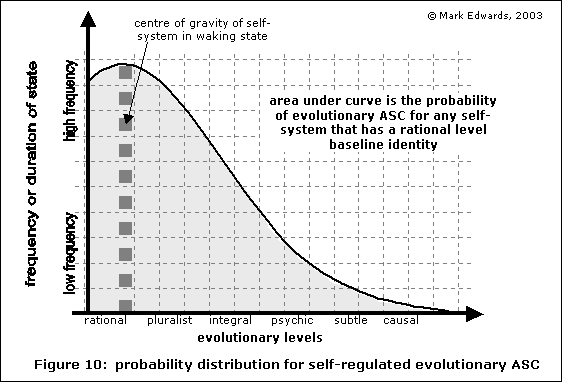
Together, these qualifications mean that, while transpersonal states are possible at any level of development, they will nonetheless be extremely rare events. The model predicts this in terms of stages of development, e.g. that greater depth means less span, and it will also predict this with regard to states, e.g. the lower the level of the self-system the less likely it is that higher states will be accessed. So, from an integral theory perspective, any purported "evidence" that transpersonal states are "available to virtually anybody at virtually any stage of development" should be doubly scrutinised to say the least. That scrutiny is not always evident in Wilber's approach to these issues.
ii) The childhood spirituality argument
Nowhere does the elevationist version of the pre-trans fallacy occur as frequently as in the area of childhood spirituality. Wilber has written frequently on the topic of childhood spirituality and readers are referred in particular to his Introduction to the third volume of his Collected works and to Sidebar D of the on-line Boomeritis addendums on the Shambhala site. In these and other writings Wilber looks at the issue of childhood spirituality in some detail. Take the following passage for example. Here Wilber admits to a "limited sense" in which infants can access spiritual awareness but he says that this is really only a "potential" that lies in their future "evolution".
So does the infantile self have access to any sort of "spiritual awareness" that is actually lost in subsequent development but can be regained in higher states of spiritual awakening? In a limited sense, yes: the trailing clouds of glory (whether in their prenatal, perinatal, neonatal or later forms). But, to repeat, those "trailing clouds" are primarily a lingering contact or impression of higher, transpersonal, transrational levels; they are not potentials that are structurally part of the infantile self, so that, in recontacting these higher levels in subsequent development, it is not a regression to infancy that is occurring, but a progression to, and rediscovery of, the higher levels themselves. The fetal and infantile self does not live in perfect nirvana, beyond all suffering and pain and decay; it lives immersed in samsara, with all its hunger, pain, passing pleasure, screams and occasional smiles--but it carries with it, buried in its bosom, the higher levels of its own potential evolution (and the higher states of subtle and causal consciousness), which it can permanently contact and bring into full consciousness only when its own development moves from prerational to rational to transrational. (Wilber, 1999c, p.5)
Juxtaposed with such passages there are other places where Wilber wants to affirm the accessing of transpersonal states (as opposed to stages) in infants as part of the natural sleep cycle.
the infant also has access to the various subtle and causal states (because it dreams and sleeps). Thus the purple-stage child can have an authentic subtle realm experience and causal-realm experience (2002b, ¶12)
In allowing the possibility of transpersonal insight in childhood, Ken wants to provide plausible reasons for the apparent fact that some children have authentic experiences of the transpersonal realms. However, in a developmental model that would be solely-based on the idea of a hierarchy of evolutionary stages there seems little theoretical room for childhood transpersonal experience to exist. Ken wants to avoid such exclusivism and as usual wants to invite everyone to the party, even the toddlers. Ken's instinct for inclusion is also supported by his acceptance of much of the research literature on childhood spirituality. These two sources of motivation provide some powerful reasons for entertaining the possibility of transpersonal experiences in the lives of the very young.
There are a few ways in which Wilber provides space in his theory to include such things. There's the "trailing clouds of glory" idea mentioned in the quote above. There's the spirituality as a developmental line idea (and therefore it isn't restricted to just the higher levels) and there's the idea that the natural dreaming and deep sleep states give access to the higher states and realms. The first two ideas seem quite reasonable and plausible to me and also can be seen to fit nicely with other integral theory axioms. However, as I have shown above, the linking of dreams and deep sleep with the transpersonal is a really dodgy move.
Wilber states many times that universal availability of the entire "general spectrum of consciousness" that results from the natural states refers not only to adults but also to children. Wilber claims that all the higher states of mind, soul and spirit, "are given to a human from birth (and are fully present)". Again, elsewhere he concludes that (1999c, p.5)
the infant also has access to what I refer to as the three major states of consciousness: gross (waking), subtle (dreaming and deeper psychic), and causal (deep sleep, pure Witness, primordial Self). The early self (prenatal, perinatal, neonatal, infancy, and early childhood) has various types of access to all of those spiritual states (because it wakes, dreams, and sleeps).
But, as I have pointed out above, particularly with the PTF-2 analysis of standard integral theory in mind, it is highly questionable to directly link anything that comes from the pre-rational/pre-verbal to anything that comes form the trans-rational/trans-verbal. This is irrespective of whether we are talking of states or stages, realms or bodies, or levels or lines. The world of pre-normative development is not the same as the world of the trans-normative.
There are already two reasonable theoretical components of integral theory that provide justification of the idea that children have very valid forms of spirituality. Why then should there be any need to risk contravening the PTF axiom by introducing the transpersonal-sleep state linkage? The "trailing clouds of glory" concept and the developmental lines concept already allow the possibility of research into childhood spirituality. While they do not permit the formal spirituality of the transpersonal to be regarded as the full province of infancy, they do allow a broader concept of spirituality to be present in the formative stages of the life span.
The majority of studies in this area actually use the "developmental line" approach in that they define childhood spirituality as the ultimate concern or occupation at each period in life. Here is an example from the, "Gale Encyclopedia of Childhood & Adolescence" –
Childhood spirituality is a child's inner life expressed through their thoughts, feelings, and yearnings as related to the ultimate questions about their life and their reality.
By this definition children's spirituality is a type of experience/behaviour that occurs at every stage/level they might be developing through. This is an entirely valid and useful way of investigating spirituality in children. It focuses on the child's own world rather than attempts to fit them into some stage of mystical development.
Having said this, there is some evidence from researchers such as Michael M. Piechowski and Catherine Harrison that some very gifted children and adolescents do have authentic transpersonal experiences. This spiritual giftedness area of research is very new and is uncovering some wonderful insights into the spirituality of children. However, there are several points which need to kept in mind with this approach. First, the subjects are often children who are gifted in a variety of ways and this puts them right out on the extreme end of intelligence, creativity and competency distributions. Generalisation from their experience to that of all infants is therefore poor form and likely to be totally unwarranted. Second, the subjects in these studies of spiritually gifted children are usually not young infants, i.e. they are typically older children or adolescents. Third, this research has still not taken full consideration of the PTF issues and is therefore likely to be labelling pre-data as trans-data. Fourth, these studies also use the developmental line definition of spirituality and they are therefore not referring specifically to the transpersonal levels of spiritual experience. On all four counts the findings of these studies on spiritually gifted children cannot be taken as evidence for any familiarity with the transpersonal in the general population of children.
Apart from the spirituality as developmental line and spiritual giftedness research there are other approaches, however, that use a developmental stage or mystical development model of childhood spirituality. Speaking as a developmental psychologist and a researcher of human services, I am singularly unimpressed by many of the key "studies" that use this approach and which claim that transpersonal or highly developed spiritual states are common events in children's lives. One major and oft quoted book that takes the transpersonal approach (Hoffman, 1992) is solely based on interviews done with adults who "recalled" their spiritual experiences in childhood of between 20-70 years prior to the interviews! To give but one example of this, the following is a recalled report of an experience of a four-year-old girl from an article by Michael Piechowsky (cited in Wilber, 2003h).
I found myself standing at the beach, alone. The sea touched the sky. Breathing with the waves, I entered their rhythm. Suddenly there was a channelling of energy: the sun, the wind, the sea were going right through me. A door opened, and I became the sun, the wind, and the sea. There was no "I" anymore. "I" had merged with everything else. All sensory perceptions had become one. Sound, smell, taste, touch, shape--all melted into a brilliant light. The pulsing energy went right through me, and I was part of this energy.
Anyone who knows anything about four-year olds would know that this is not the language of a young infant – spiritually gifted or otherwise. What are we to make of the original experience of the child when it has been so totally transformed through adult language and several decades of intervening time? Whatever we do find in such reports, we can be certain of one thing - it won't be the child's original experience of the spiritual.
There are other studies of childhood spirituality that are based on such recall methodologies. Based on what we know now about the active layering of memory over time, such a methodology unfortunately renders all these recall studies highly suspect to say the least. I also suspect that there is a ongoing PTF-2 reinterpretation of children's experiences from the researcher's perspective and, in the process, all the pre-verbal and pre-rational experiences of joy, aesthetic delight, spontaneous play and intense pleasure get laden with adult inferences of trans-verbal and trans-rational spirituality. We already know that PTF-2 readings of non-rational events are very common among transpersonal theorists (Washburn, Norman O. Brown). The methodologies of researchers into childhood spirituality often do not guard against such confounding interpretations of their data. In fact, when we define the transpersonal in terms of levels such as the psychic, subtle and causal levels, it is likely that the infant experience of the transpersonal is a very rare event. And this is true no matter what state they are in – waking, dreaming or deep sleep!
Knowing what we know about the insidious nature of the PTF-2 interpretive bias, it is incumbent upon those who study children's spirituality to ensure that their methods remove any chance of an observer or subject bias in re-interpreting the core experiential/behavioural data in that direction. If they don't, their findings can always be rejected as being suspected of PTF-2 distortions. I fear that Ken himself has not been critical enough of the childhood spirituality literature and I believe he is being far too generous in his estimation of the accessibility of the higher transpersonal states to children. He has bent over backwards trying to accommodate the possibility of childhood access to the transpersonal and I think his model of states has been become too convoluted and rubbery as a result. But this is true not only of his view of childhood spirituality but of the accessibility of the transpersonal through the dreaming and deep sleep states in general. Integral theorists of the transpersonal who hold to the "greater depth, less span" dictum should tend to side with Matthew the Evangelist in the view that, "many are called but few are chosen". Ken, in contrast, is being far too accommodating in allowing everyone every night complete and total access to the kingdom. "Greater depth, less span" means that there will not only be fewer inhabitants of the higher stages but fewer visitors as well.
There is another string to Wilber's infant spirituality bow that relates to his states model. (I will say a little more on this issue in the second (and final) part of this essay on states.) This is the idea that states are a priori "givens" that are "ever present". What does it mean when Wilber (2003c, ¶ 179) says that, "the states and their bodies/realms are given to a human from birth (and are fully present)". It's true that everything is there in each holon or developmental entity as a potential in its embedded structural latency of development. But this is just as true for a wombat or a wolf. Each part of the manifest Kosmos has the entire spectrum of developmental potential loaded into its Being. This is the Atman is Brahman principle. To paraphrase Thomas Aquinas - God is present in the Kosmos and he is present in all his fullness. And He is present in each thing in all his fullness. The Ultimate is always present in full in the relative. But the relative certainly doesn't "experience", "access", "enter into", "fall into", have "freely available", "identify with", or "authentically experience" that the full potential of the Ultimate in any manifest way whatsoever until the journey of development has been largely completed. This is true for the average adult, the infant, the dog, and the single cell. The "always present" principle does not support the contention that everyone experiences the Ultimate at all times. The Mahayana does not mean that we need not take up the great Way. Grace is there in every moment but we must still work to realise that in the Here and Now. This is how it is for each being and so it is for each neonate or child. States are not "always present" in the sense that the Nondual Ground is. States are of the relative world. They change and pass away. States are not given, they develop, evolve and involve. The dream state, the deep sleep state and the waking state are gifts not givens.
I pointed out earlier that stages and states are intimately linked. States are, after all, simply an experience of a stage on a temporary basis. The basic contents and subjective experiences of the state will be directly related to the deep structures of the stage. For example, a temporary state experience of the rational-egoic stage will always contain cognitive contents that include rational thoughts; likewise a temporary state experience of the causal will always contain the experiential content of formless emptiness. The content of a state must include elements that are directly related to the deep structure of the stage. If the state has no content related to a particular stage then it is not an experience of that stage but of some other. Now, in the following quotation Wilber recognises that the content of infants' dreams have nothing to do with the higher mental, pluralist or transpersonal stages. But amazingly, although they don't have any content of the stages they still can access the transpersonal states, what ever that may mean.
an infant wakes, dreams, and sleeps—in other words, the infant has access to all 3 major states of consciousness. But an infant does not have access to all the major stages of consciousness (e.g., the infant does not have access to formal operational cognition, which emerges or develops during adolescence; nor does the infant have access to postconventional morality, nor to hypothetical reasoning capacities, nor to the orange meme, nor the green meme, and so on. The higher levels, such as manas and vijnana, have not yet emerged).
So if we look at the contents of an infant's dream state, what might we find? Whatever we find, it will not be contents from the higher stages of development: as research has made abundantly clear, the dreams of infants and children do not contain formal operational thoughts, nor postconventional impulses, nor turquoise visions, and so on. Rather, the contents of the various states are provided by the stage(s) of development that the person is at.
Thus, to use the simple 5-stage scheme, an infant has access to the 3 great states (waking, dreaming, sleeping) and their 3 associated body/energies (gross, subtle, causal); but the infant has developed only the first one or two levels of the 5 levels of consciousness: namely, the material-food and emotional-pranic levels. The higher levels/stages (mental, higher mental, overmental) have not yet directly emerged. Therefore, the actual contents of the infant's waking and dreaming states will be provided by those first two levels of consciousness. (Wilber 2003c, ¶ 180-182)
Notice that Ken is saying here that, "the contents of the various states" are generated by the stage of development of the individual experiencing that state. But, he is also saying that when infants temporarily access stages (during the state itself) they experience no content whatsoever of those stages. Run that past me again Ken! Stages generate the content of states. (That's fine.) And what do we find when an infant has a temporary state experience of a higher stage. "Whatever we find, it will not be contents from the higher stages of development". (Now that's what I call a contradiction par excellence). There is just no way that anyone can temporarily access a particular stage/level of knowing/being without the phenomenological contents experienced by the individual having some very close relationship with the definitive characteristics of that stage. The reason why researchers find no content of transpersonal stages in an infant's dream or deep sleep state is because they are not having any experience of those stages – temporary or otherwise. They are having experiences of the very formative stages of human development – that is, in the case of very young infants, all the very early pre-stuff of physiological and anatomical development, uroboric fusion, pleromatic and undifferentiated proto-emotions. All this is about as far from the transpersonal as it gets and is, therefore, the most enticing to erroneously categorise as transpersonal (according to PTF-2 developmental logics).
Ken's theory of states categorically asserts that newborns start out immersed in the deep sleep, causal state (c. 9hrs) and the dreaming subtle state (c. 9hrs) for up to 18 hours each day for months. Through early childhood this is reduced to about 10 hrs and stabilises in adolescence to about 8hrs each night. Of this around 6 hours is spent in the causal deep sleep states. This goes on every day, year after year. And what's the impact of this constant and prolonged accessing of the state of nirvikalpa samadhi in deep sleep for all those years starting from "birth". Well, unfortunately, not much it seems. But, of course, I have it all wrong. Children don't have the developmental structural stages that allow them to accommodate these higher experiences. Ken proposes that we are not aware of these states as transpersonal states once we re-enter the waking world of the walking ignorant because we (and all infants) don't have the required level of permanent stage acquisition. We forget it all! So we spend all this time in the transpersonal without being able to integrate it into our waking identity. Literally 40% of our lives is spent, according to Ken, immersed in transpersonal experiences without those experiences actually being remembered or integrated or actually impacting in any meaningful developmental sense on our waking state identity. He is proposing that we spend a very large proportion of our lives immersed in the causal state of formless samadhi without those states having any significant impact on our developmental growth. Yet we can have the most fleeting experience of that same transpersonal realm in the waking states and it changes our lives forever. Now honestly this just doesn't add up. The reason why the states of dream and deep sleep have little developmental impact on our waking stage of development is because they aren't transpersonal at all they are pre-personal. The experiential contents of the dream and deep sleep states have a big impact on our lives but that impact is all involutionary not evolutionary. Sleeping is all about involutionary healing. It's about restoring our physical, emotional and mental health. It's about balancing and rejuvenating our poor bewildered self-system that thrashes about so much every waking day.
When Wilber purports that "anybody", including infants, can access the transpersonal psychic, subtle and causal realms through the dreaming and deep sleep states he is elevating the pre-personal realms of the archaic, physical, sensory, sexual, emotional, and mythic (which constitute the dreaming and deep sleep states) to the transpersonal realms of the psychic, subtle and causal. In other words, he is expounding a very strong version of the PTF-2. And there is no need whatsoever to do this. I see no reason for contravening the PTF tenet in integral theory to accommodate any ancient traditional theory of states, or the very questionable data on childhood spirituality or the rather romantic views of many writers on the topic or the assumption that the spirituality of the child has to be transpersonal to be valid. The spirituality of the infant has virtually nothing to do with that of the transpersonal. It's the infant spirituality of unbridled happiness, unrestrained expression, physical creativity, naive innocence, instinctive joy, unlimited play, unreserved emotional flow and unconditional bonding with others. None of this needs to have anything to do with the subtle or causal realms to be completely Beautiful, True or Good for children.
Notes
[1] Ken Wilber's concept of the Pre-Trans Fallacy (PTF) is one of the core components of Integral theory and may be one of Ken Wilber's most important contributions to the history of ideas. The PTF proposes that all human developmental potentials, both ontogenetic and phylogenetic, proceed from pre-conventional, pre-rational, pre-egoic stages through conventional, rational, egoic stages and on to trans-conventional, trans-rational, trans-egoic stages. In ontogenetic lifespan development this takes the form of, i) early childhood (pre-egoic identity) to, ii) adolescence/early adulthood (egoic identity) to, iii) spiritual authenticity in mature adulthood (trans-egoic identity). In phylogenetic development it takes the form of i) early human collectives and primate groups (pre-contemporary humanity) to, ii) contemporary normative human social groups, i.e. all existing social and cultural groups (contemporary humanity) to, iii) trans-conventional human collectives, e.g. integrated spiritual communities and networks.
The conventional-rational-egoic world very frequently confuses the pre- with the trans- simply because both lie outside of its worldview. Hence the same rational descriptives are applied to both pre- and trans- experiences because the rational-verbal self can't see the difference between the two. This gives rise to all sorts of confusions and reductions amongst psychologist, sociologists and philosophers. Some theorists tend to reduce the world of the Trans- to the world of the Pre- (PTF 1) and others tend to elevate the world of the Pre- to the world of the Trans- (PTF 2). Though PTF theory is based on a very simple idea, it has huge implications for the analysis of all scientific, cultural and social disciplines. Far from being a technical issue related only to transpersonal psychology, the construct has very broad application in the social sciences, developmental studies, political sciences, and religious and spirituality studies.
While some (Washburn, 1989 ; Schlamm, 2001) have strongly criticised Wilber for the concept, I have never found their arguments to be convincing. In contrast to the convolutions and redundancies of the Washburn model, Wilber's PTF theory provides a parsimonious and clear analytical tool for dealing with many confusing issues concerning human personal and social development. From the empirical perspective, the only scientific test of the PTF theory and anti-PTF approaches (Thomas, Brewer, Kraus, & Rosen; 1993) came down decisively in favour of Ken Wilber's model. From a clinical perspective, and speaking as a professional developmental psychologist, I have no doubt about the validity of the PTF model as a means for interpreting and understanding many aspects of personal growth.
[2] It could also be very reasonably argued that ASC can also exist at the same level as the baseline waking state. Examples of these states might include ordinary joggers who enter a particular zone of awareness while running, some amateur musicians or music lovers who enter into a very deep level of musical consciousness, or when people go into very focused levels of concentration in their work or when attending to some task. In all these examples there is no real alteration in the baseline level of the self-system, but there is also no doubt that in such instances individuals are in a very special state of mind. These however relate more to what Alan Combs calls mental states rather than states of consciousness. For the purposes of this discussion I will not include such examples as ASC.
References
Hoffman, E. (1992). Visions of innocence: Spiritual and inspirational experiences of childhood. Boston, MA: Shambhala.
Kaplan, L. (1978) Oneness and separateness: From infant to individual. New York: Simon and Shuster.
Osbourne, A. (1977) The teachings of Bhagavan Sri Ramana Maharshi in his own words. Tiruvannamalai, South India: Sri Ramanasramam.
Wilber, K. (1999a) The collected works of Ken Wilber: Volume one. Boston: Shambhala.
Wilber, K. (1999b) The collected works of Ken Wilber: Volume four. Boston: Shambhala.
Wilber, K. (1999c) The collected works of Ken Wilber: Volume three. Boston: Shambhala.
Wilber, K. (2000a) The collected works of Ken Wilber: Volume six. Boston: Shambhala.
Wilber, K. (2000b) The collected works of Ken Wilber: Volume eight. Boston: Shambhala
Wilber, K. (2002a) Sidebar G: States and stages - Part I. The relation of states of consciousness and stages of consciousness: No model is complete without both. Retrieved 24/10/03 from http:// wilber.shambhala.com/html/books/boomeritis/sidebar_g/part1
Wilber, K. (2002b) Sidebar G: states and stages - Part II. States and stages in development. Retrieved 24/10/03 from http:// wilber.shambhala.com/html/books/boomeritis/sidebar_g/part2
Wilber, K. (2003a) Kosmic consciousness: Disc four - states of consciousness. Boulder, Co: Sounds True.
Wilber, K. (2003b) On the nature of a post-metaphysical spirituality - Response to Habermas and Weis. Retrieved 24/10/03 from http:// wilber.shambhala.com/html
Wilber, K. (2003c) The Kosmos trilogy, Volume 2 - Excerpt G: Toward a comprehensive theory of subtle energies. Retrieved 24/10/03 from http:// wilber.shambhala.com/html
Wilber, K. (2003d) The Kosmos trilogy, Volume 2 – Excerpt D: The Look of a Feeling: The Importance of Post/Structuralism. Retrieved 24/10/03 from http:// wilber.shambhala.com/html
Wilber, K. (2003e) The Kosmos trilogy, volume 2 – Excerpt A: An integral age at the leading edge. Retrieved 24/10/03 from http:// wilber.shambhala.com/html
Wilber, K. (2003f) On critics, integral institute, my recent writing, and other matters of little consequence: A shambhala interview with ken wilber. Retrieved 24/10/03 from http:// wilber.shambhala.com/html
Wilber, K. (2003g) Waves, Streams, States, and Self--A Summary of My Psychological Model (Or, Outline of An Integral Psychology). Retrieved 24/10/03 from http:// wilber.shambhala.com/html
Wilber, K. (2003h) Sidebar D: Childhood Spirituality Retrieved 24/10/03 from http:// wilber.shambhala.com/html
© Mark Edwards, 2003
